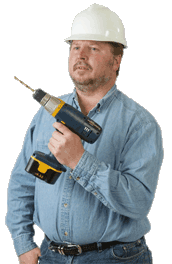A try square is an L-shaped instrument used in building to check materials and constructions. It is similar to the larger carpenter's square. The tool shows perfect squared edges at 90-degree angles. This square can be used to check the levelness of wood, mark and measure, or test a construction, such as a wall joint or piece of furniture, to make sure the edge is square.
These tools are usually made of metal and wood. The shorter edge is made of wood and is called the stock, while the longer edge is made of metal and is called the blade. The two pieces of the L-shape are usually bolted together with rivets. Additionally, there may be a brass strip between the two pieces to ensure quality and accuracy.

Some try squares are made completely of acrylic, wood, or metal, but the wood and metal version is the most common. This tool may also have measurements marked on the edge to assist in marking and calculation. A try square is smaller than a carpenter's square and usually measures no more than 12 inches (about 30 centimeters). Some may be adjustable, with the ability to change the dimensions between the two edges, but most are fixed in place.
To test a piece of lumber or check edges, the inside angle of the try square is placed against the edge, and if light shows through between the try square and the wood, the wood is not level and square. This inside angle can also be used in a sliding motion to check both ends of the material quickly. This process can also be used to test a joint, such as those areas where walls adjoin. In this case, the outside part of the L-shape is used to look for light to shine through between the square and wall.
If the try square has measurements marked on its edge, it can also be used much like a ruler for calculating length and for chalking lines. Since the stock is usually thicker than the blade, the stock can be held horizontally against the wood, with the blade lying vertically up the side of the wood. If no light shines through between the stock and the edge of wood, the blade will measure out a straight line.
It is important to consider quality of construction in using these types of tool because accuracy is so crucial. Wood and metal models should be constructed of strong material such as hard wood and steel, and a try square should always be level. To test this, individuals can draw a line along the blade, then flip the square over and use the stock to draw another line over the first one. The two lines must match perfectly to ensure accuracy.
